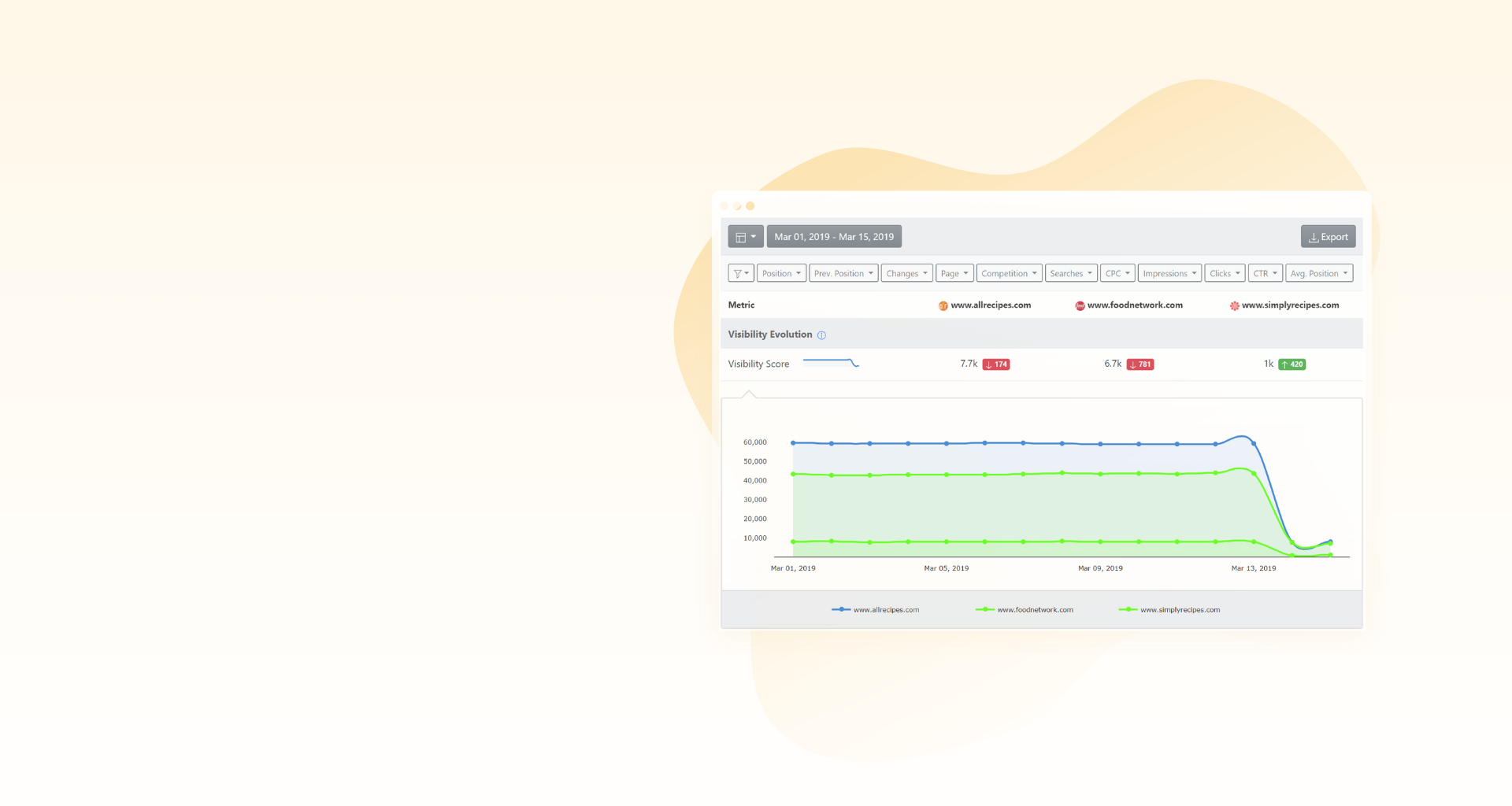Making sense of organic visibility changes becomes a challenge when you’re dealing with large keyword sets.
From thousands of SERPs tracked, it’s difficult to pinpoint the exact cause of a visibility drop, which pages of your website lost their rankings and for which keywords.
In this article, I’ll share with you an AWR workflow, based on keyword ranking distributions and keyword segmentation, that helps you find out precisely where you lost ground in SERPs and where you need to focus your efforts to gain back your visibility.
If you’re new to AWR, be sure to sign up for a free trial account
to follow things through with us.
Let’s get started.
Acknowledging the Visibility Drop
It all starts with that horrific moment when you log into your rank tracker and see that once beautiful, ascending visibility chart line, now going…. down.

That sucks, big time. But hey, we can fix this, that’s what we do 😉
Visibility is a great metric for weighting a website’s overall performance in SERPs, but it would only take us this far.
At most, we can compare visibility for keyword groups, to see if there’s one particular group of keywords that has lost rankings, but that still leaves us half way through to knowing what pages we need to focus on and what keywords.
So, we prefer moving over to the Ranking > Distribution report, and take a different approach.
Distribution of rankings
The Rankings distribution report splits keywords into segments, depending on their ranking, for our website and competitors.

This is great because it lets us understand the dynamic in SERPs:
- How my keywords are moving from one segment to another
- How my losses become my competitors’ gains, and vice versa
As a general rule, seeing red labels across this SEO report is not necessarily a bad thing.
But having your number of ranked Keywords decrease by 45 terms, like our website – allrecipes.com – in this example has, is really BAD.
By looking at the distribution, it’s likely that the majority of loses come from the 2-5 and 21-50 segments. Let’s find out what changed.
Pages that got impacted
The same Ranking Distribution report also lets you drill keywords down per URL, and find out which are the pages that lost the most rankings:
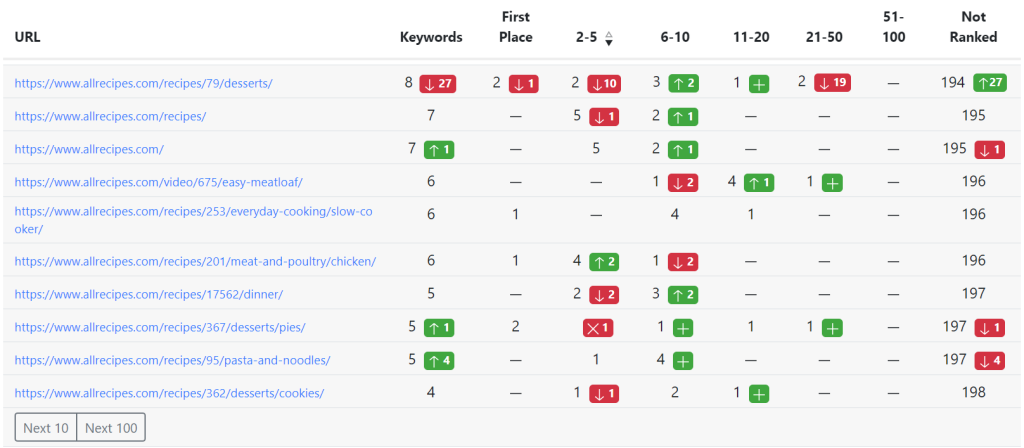
In our case, we have a category page that dropped out of top 100 search results for a lot of keywords – allrecipes.com/recipes/79/desserts/ – and a few other pages with less significant ranking losses.
We’ll focus first on this category page – /recipes/79/desserts/ – and move forward to determine the keywords for which the page lost rankings for.
Keywords we’ve lost rankings for
We’ll use ranking filters with the Ranking > Keywords report, to determine which keywords have got their ranking changed from each ranking distribution interval.
We’ll leave the number of ranked keywords for last, so let’s start with “First Place”.
I’m applying filters and find that we have:
- 1 keyword no longer ranking 1st for; it has moved into the 11-20 ranking segment

- 2 keywords have fallen from above to below the fold of 1st page of results;

- And from all the 19 keywords that have existed the 21-50 ranking interval, there isn’t a single one that is still ranking.

When a URL filter is applied, the app only shows keywords that are still ranking. That’s because the app cannot connect a dropped keyword to a URL, so it will not show you the keywords that are currently dropped for your URL.
Therefore, we’ll use a quick workaround to determine the keywords that dropped out of top 100, and their URLs.
First off, we pull out the list of dropped keywords:
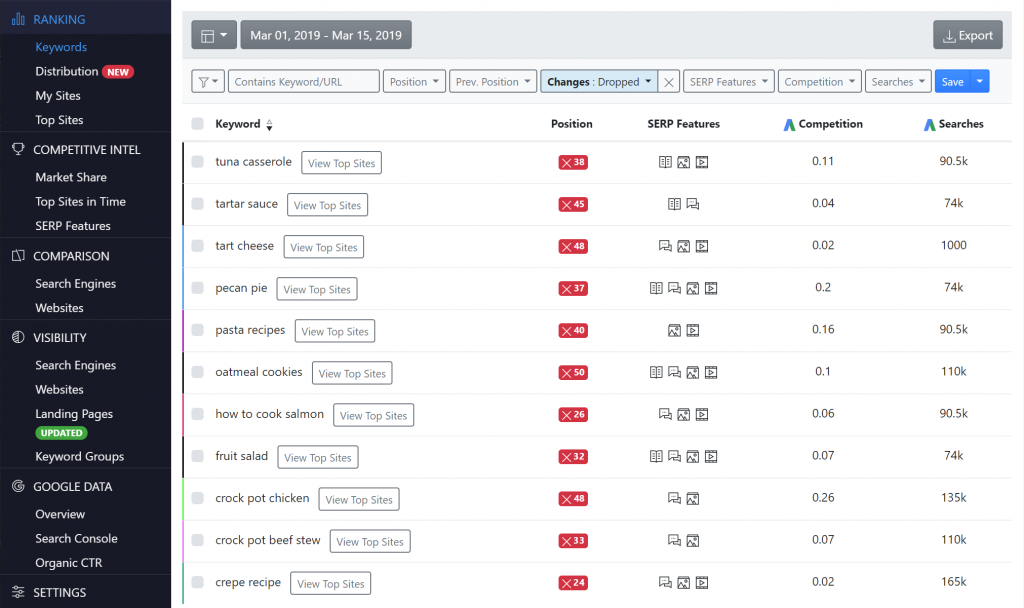
Select all dropped keywords and assign them to a new keyword group – [Lost Keywords]:
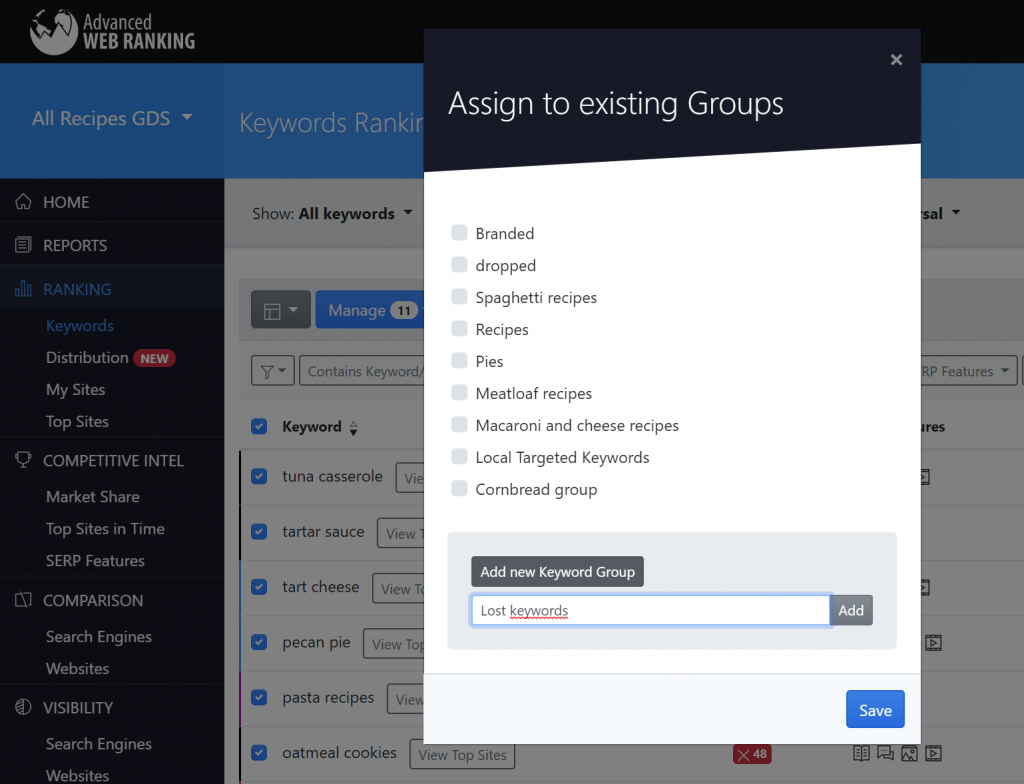
Switch the date selection to the initial date and display [Lost keyword] group:
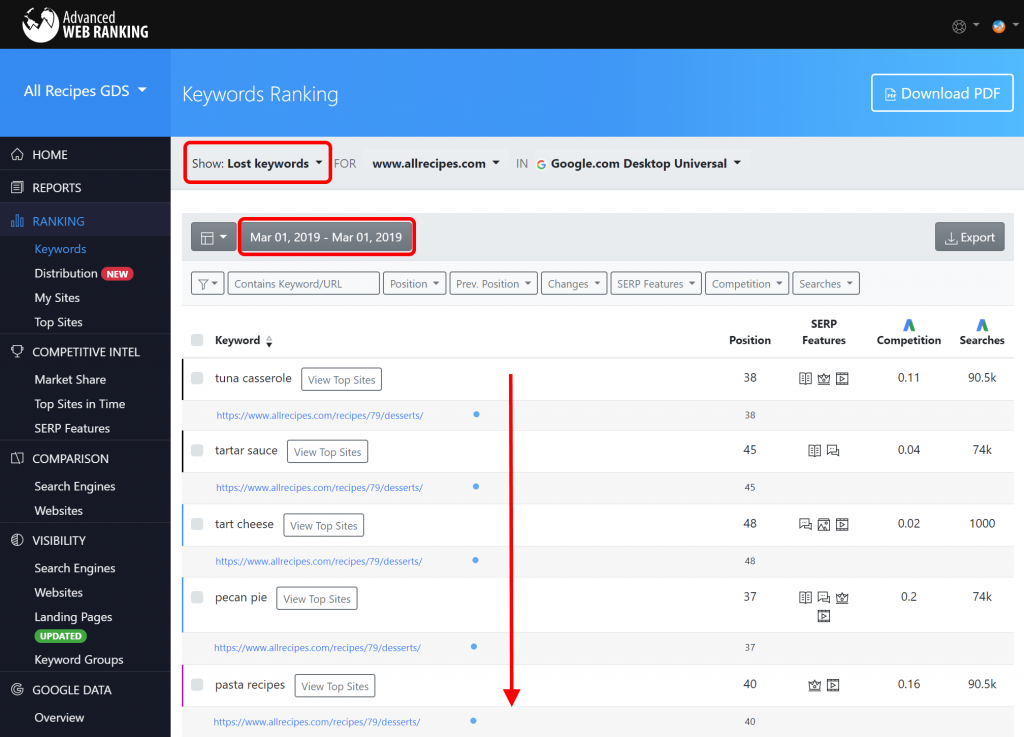
There you have it
At this point we have a clear diagnosis of the URLs and keywords that lost ground in SERPs.
You can use this workflow for any visibility changes, favorable or not, and easily figure out if the ranking changes were the consequences of something you made and if you need to take any actions or make improvements.
Hope you’ll give it a go, and please be sure to share your ideas and feedback. I’d love to hear how it’s working for you.
